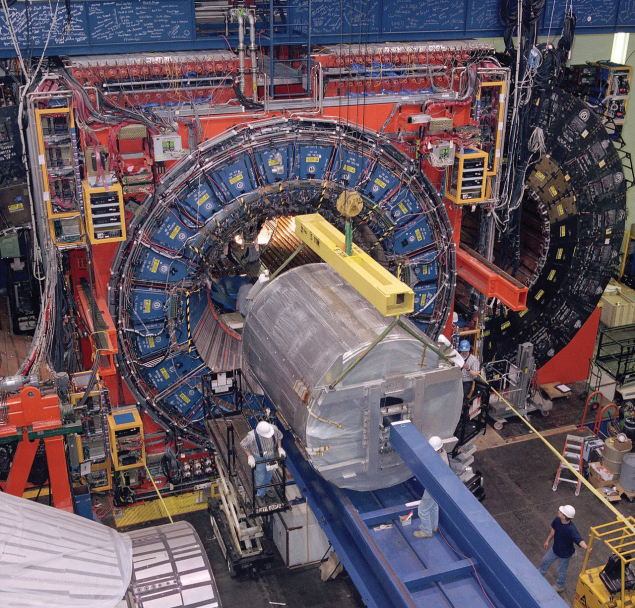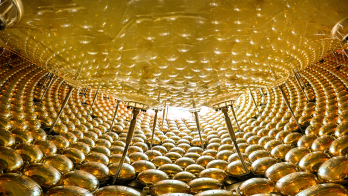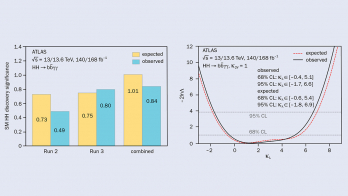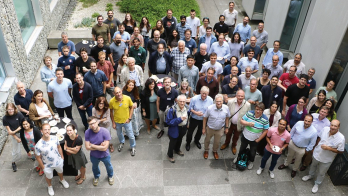
It’s tough to be a lone dissenting voice, but the CDF collaboration is sticking to its guns. Ongoing cross-checks at the Tevatron experiment reinforce its 2022 measurement of the mass of the W boson, which stands seven standard deviations above the Standard Model (SM) prediction. All other measurements are statistically compatible with the SM, though slightly higher, including the most recent by the CMS collaboration at the LHC, which almost matched CDF’s stated precision of 9.4 MeV (CERN Courier November/December 2024 p7).
With CMS’s measurement came fresh scrutiny for the CDF collaboration, which had established one of the most interesting anomalies in fundamental science – a higher-than-expected W mass might reveal the presence of undiscovered heavy virtual particles. Particular scrutiny focused on the quoted momentum resolution of the CDF detector, which the collaboration claims exceeds the precision of any other collider detector by more than a factor of two. A new analysis by CDF verifies the stated accuracy of 25 parts per million by constraining possible biases using a large sample of cosmic-ray muons.
“The publication lays out the ‘warts and all’ of the tracking aspect and explains why the CDF measurement should be taken seriously despite being in disagreement with both the SM and silicon-tracker-based LHC measurements,” says spokesperson David Toback of Texas A&M University. “The paper should be seen as required reading for anyone who truly wants to understand, without bias, the path forward for these incredibly difficult analyses.”
The 2022 W-mass measurement exclusively used information from CDF’s drift chamber – a descendant of the multiwire proportional chamber invented at CERN by Georges Charpak in 1968 – and discarded information from its inner silicon vertex detector as it offered only marginal improvements to momentum resolution. The new analysis by CDF collaborator Ashutosh Kotwal of Duke University studies possible geometrical defects in the experiment’s drift chamber that could introduce unsuspected biases in the measured momenta of the electrons and muons emitted in the decays of W bosons.
“Silicon trackers have replaced wire-based technology in many parts of modern particle detectors, but the drift chamber continues to hold its own as the technology of choice when high accuracy is required over large tracking volumes for extended time periods in harsh collider environments,” opines Kotwal. “The new analysis demonstrates the efficiency and stability of the CDF drift chamber and its insensitivity to radiation damage.”
The CDF II detector operated at Fermilab’s Tevatron collider from 1999 to 2011. Its cylindrical drift chamber was coaxial with the colliding proton and antiproton beams, and immersed in an axial 1.4 T magnetic field. A helical fit yielded track parameters.
Further reading
A V Kotwal 2025 Phys. Rev. Res. 7 013128.








